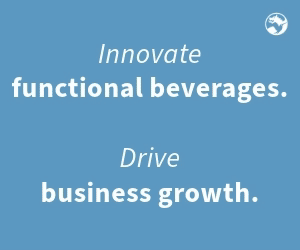The latest news, trends, analysis, interviews and podcasts from the global food and beverage industry
Research led by scientists at Columbia University has discovered that a litre of bottled water contains, on average, around 240,000 detectable plastic fragments – 10-100 times more than previously estimated – posing health risks by infiltrating organs and the bloodstream. Nanoplastics, characterised by their extremely small size, possess the ability to bypass the intestines and lungs, allowing them to enter the bloodstream and subsequently reach organs such as the heart and brain. This minuscule scale enables them to infiltrate individual cells and cross through the placenta, impacting the bodies of unborn babies. Study co-author Beizhan Yan said: “Previously, this was just a dark area, uncharted. Toxicity studies were just guessing what’s in there. This opens a window where we can look into a world that was not exposed to us before.” The study used a technique called stimulated Raman scattering microscopy – co-invented by study co-author Wei Min, a Columbia biophysicist. This method involves using two simultaneous lasers to make specific molecules resonate. The researchers targeted seven common plastics and developed a data-driven algorithm to interpret the findings. Scientists tested three undisclosed popular US bottled water brands for plastic particles as small as 100 nanometers. Each litre contained between 110,000 to 370,000 plastic fragments, with 90% being nanoplastics and the remainder microplastics. Microplastics are fragments ranging from five millimetres down to one micrometre, equivalent to one-millionth of a metre – a human hair is approximately 70 micrometres across. Experts not only identified the seven specific types of plastics but also documented their shapes, potentially offering valuable insights for biomedical research. Among the identified plastics, polyethylene terephthalate (PET) was prevalent, which is commonly used in water bottles. The study suggested that PET may enter the water when bottles are squeezed or exposed to heat, with cap handling contributing to particle release. It added that polyamide, a type of nylon, surpassed PET in prevalence. This was attributed to plastic filters used in the water purification process before bottling. The researchers also discovered other common plastics like polystyrene, polyvinyl chloride, and polymethyl methacrylate, which find applications in various industrial processes. The study highlighted that researchers found that the seven plastic types they searched for accounted for only 10% of the nanoparticles in their samples. The remaining 90% remained unidentified, leaving the possibility of tens of millions of unknown nanoplastics per litre. Min said: “There is a huge world of nanoplastics to be studied...it’s not size that matters. It’s the numbers, because the smaller things are, the more easily they can get inside us.”







.jpg)